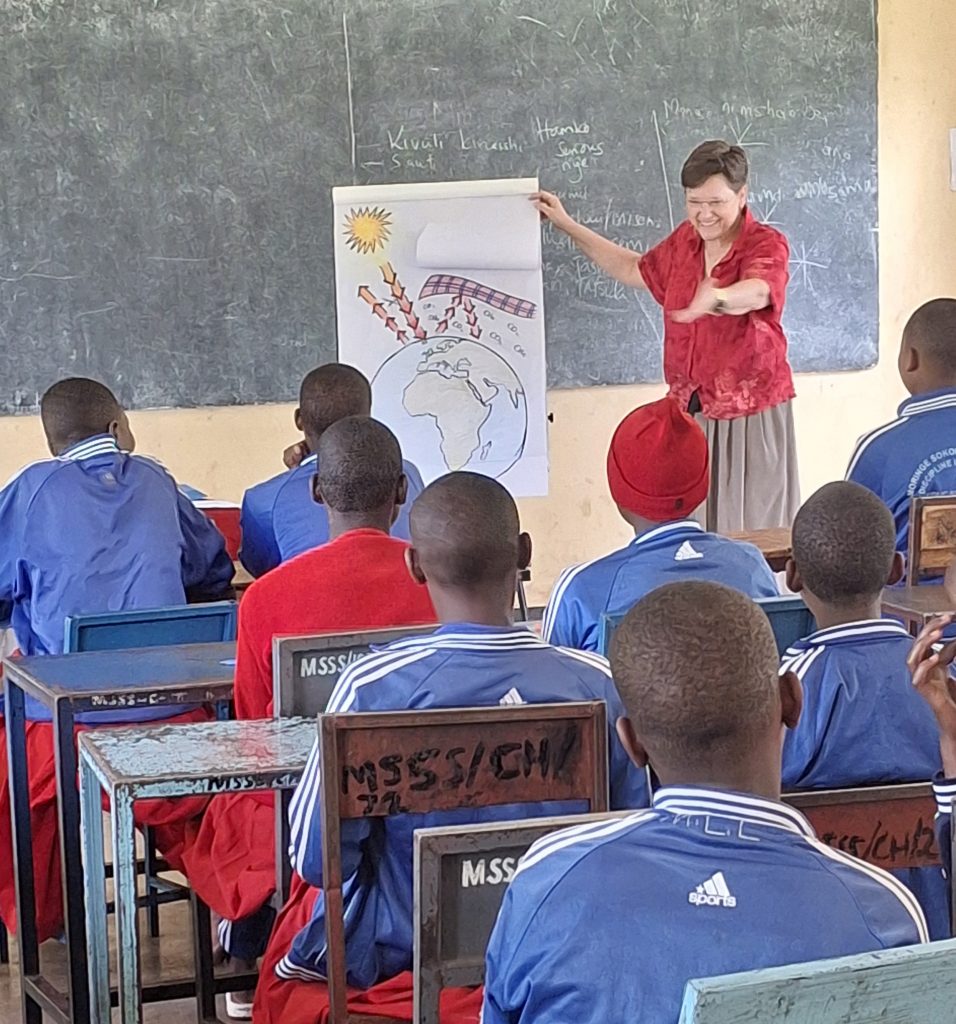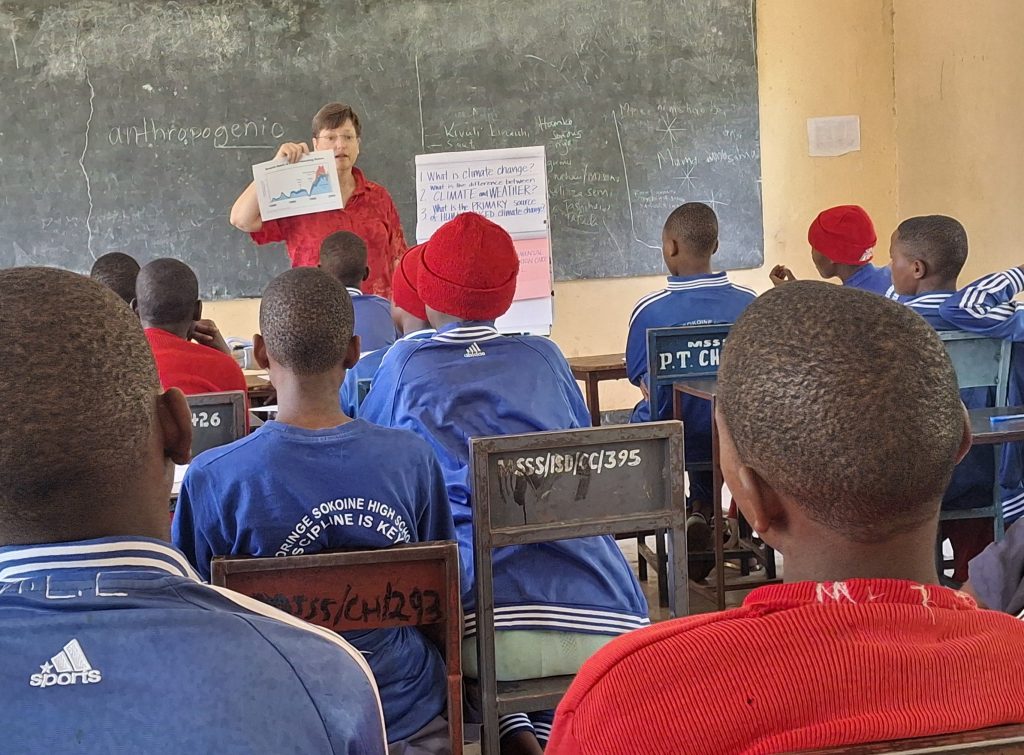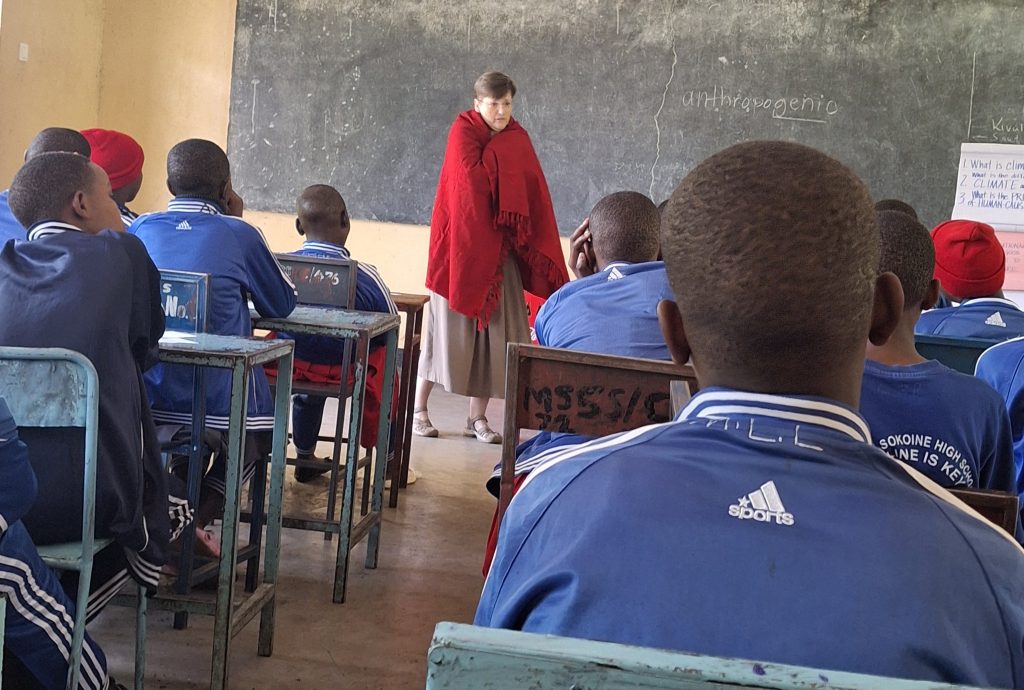It ends up that I got to teach the last lesson cycle in this fieldwork.

My project collaborator, a wonderful teacher at the MaaSae Girls Lutheran Secondary School (MGLSS), wrote the secondary school lessons. But he was moved by the government to southern Tanzania right after Easter. Then, the back-up teacher ended up hired for a several week German NGO consultancy. So, it would be more important to have a longer-term job than my Saturday gig. I told him that I give him my blessing to back out of the teaching, as this project is meant to be a blessing, and it would not be a blessing if he was not able to take this work opportunity. The other 2 teachers (also collaborative writers of lessons for this research project) had prior obligations. Providentially, it is an English-medium secondary school. I’m actually glad to have had a chance to teach the lessons. I’ve been working on the lesson content as a conversation partner with the Maasai collaborative writers with editing, formatting, gathering feedback from the Stakeholders who reviewed the draft lesson plans, then revisions with the writers’ changes, and next edition of formatting.
I was at the Moringe Sokoine Secondary School in Monduli. The head of school has been eager to host the research project. They are down the road just a couple of kilometers from MGLSS. Both are owned by the diocese, however Moringe does not have a Western-funded student sponsorship project like MGLSS does (so if you are interested in helping out an underdog school, let me know).
I had almost 30 Maasai girls for three lessons. While the project was designed for Form 2 (and 8th grade equivalent), the head of school asked to include other Maasai students, as his school has less than MGLSS. We agreed on Form 3, but then he said, “Why not have Form 1 too?” It was better for me to say, “Yes.” The good news was that we had a nice group of students, and the challenge is that most Form 1 students are about 4 months into their English language learning. However, I had several opportunities for small group discussion, where those who were tracking better could help those with less English competence, I had my main handout in the first lesson in 3 languages: English, Kiswahili, and Maa, I had prepared flipchart pictures to illustrate what we were talking about, and I used some key vocabulary in Kiswahili to help anchor key content.

At the beginning, they were to tell a conversation partner a one-minute story of the most beautiful place they had ever been and how they felt. Then, they switched speakers in their pair. I started with Form 1, “Any Form 1 students want to share their story.” No volunteers. None also for Form 2, but a Form 3 student was glad to tell her story. After she broke the ice (an idiom that does not work in Tanzania), then others from the younger students were willing to share a story.
- This is the “hook” for the lesson, as I continue: “We have shared and heard some stories of the amazing beauty of God’s creation. Our Creator God made an amazing and beautiful world! The Bible tells us that God has given us humans the responsibility to care for God’s creation. Let’s look together at some important texts in the Bible. (Queue first handout with instructions, Bible verse, and 3 questions.) There are 4 Bible texts, and groups of 4 students had 10 minutes to discuss the text, answer the 3 questions, and choose a reporter. It took some coaching and help from me, but we got through our 4 verses (Gen 1:31; Gen 2:15; Ps 24:1–2; John 3:16) and our 3 questions.
- What does this Bible verse say about God?
Example: God is the Creator. God loves the world.
- What does this Bible verse say about God’s creation?
Example: God created the world good. The earth belongs to the LORD.
- What does this Bible verse say about the relationship between humans and God’s creation?
Example: God put people into the world and instructed them to take care of it.
The first lesson went fine, though, in general, most students were a bit shy. By the third lesson, I had a good rapport with the students. When I was leaving, one of the students said, “We love you Mama Anya.”
There are three lessons: 1) biblical creation care; 2) Maasai traditional environmental knowledge and the correlation with the biblical “creation triangle” (Shalom comes from a right relationship with God, humans, and non-human creation); 3) climate science applied to a Maasai context. Each of the lessons ends with hope!
I benefited from watching 4 Maasai teachers teach these lessons in 7 previous fieldwork visits. One inculturation was not using “greenhouse effect” and “greenhouse gases” for people who have never seen a greenhouse! So we used the “blanket effect” and “plant-warming gases.” Yes, bring a Maasai blanket for illustration!

I was able to learn things from them and streamline the lessons to better fit the 60-minute time frame. Most of the lessons tried to cover more information than the time would allow. I told them that later, they could adapt the lessons to more occurrences or longer time frames, but for the research, we needed to have 3 lessons in one workshop, so that I had a better chance of gathering clean data. If the confirmation student lessons were taught over 3 weeks, there would be inconsistent participation and little chance of enough students having attended all 3 lessons for good survey data.

So, what a joy for me to be able to teach the lessons and connect with the students in such a meaningful way and with such important content! Oh, I love teaching Maasai girls!
Mikitamayana Engai! / Mungu akubariki! / God bless you!
The blanket effect–that is such a good idea, and really does illustrate the concept so well. Great thinking! 🙂